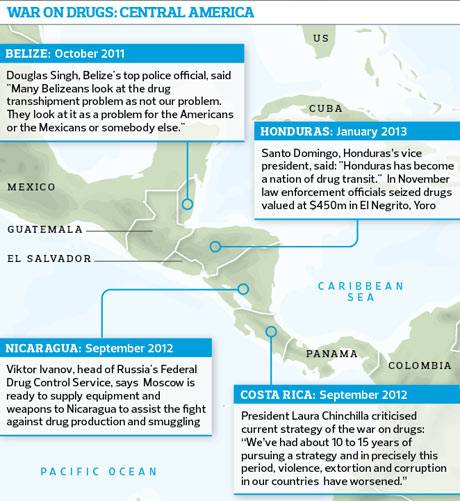The numbers don't lie. It's time we all stand up, all stand together, and ban...... soccer?
15. Burnden Park Disaster
Date: 9 March 1946
Location: Burnden Park, Bolton, Manchester, England
Death Toll: 33
14. The Heysel Disaster
Date: 29 May 1985
Location: Heysel Stadium, Brussels, Belgium
Death Toll: 39
13. Orkney Disaster
Date: 13 January 1991
Location: Oppenheimer Stadium, Orkney, South Africa
Death Toll: 42
12. Ellis Park Stadium Disaster
Date: 11 April 2001
Location: Ellis Park Stadium, Johannesburg, South Africa
Death Toll: 43
11. Kayseri Ataturk Stadium Tragedy
Date: 17 September 1968
Location: Kayseri Ataturk Stadium, Kayseri, Turkey
Death Toll: 44
10. Bradford City Fire Disaster
Date: 11 May 1985
Location: Valley Parade Stadium, Bradford, England.
Death Toll: 56
9. The Second Ibrox disaster
Date: 2 January 1971
Location: Ibrox Stadium, Glasgow, Scotland.
Death Toll: 66
8. The Luzhniki disaster
Date: 20 Oct 1982
Location: Lenin Stadium, Moscow, Russia
Death Toll: 66+
7. Puerta 12 Tragedy
Date: 23 June 1968
Location: Estadio Monumental, Buenos Aires, Argentina
Death Toll: 71+
6. Port Said Stadium Disaster
Date: 1 February 2012
Location: Port Said Stadium, Egypt
Death Toll: 79
5. The Guatemala Disaster
Date: 16 October 1996
Location: Mateo Flores National Stadium, Guatemala City, Guatemala
Death Toll: 80+
4. The Katmandu Disaster
Date: 12 March 1988
Location: National Stadium, Katmandu, Nepal
Death Toll: 93
3. The Hillsborough Disaster
Date: 15 April 1989
Location: Hillsborough Stadium, Sheffield, England
Death Toll: 96
2. The Ghana Disaster
Date: 9 May 2001
Location: Accra Sports Stadium, Accra, Ghana
Death Toll: 126
1. The National Stadium Disaster
Date: 24 May 1964
Location: National Stadium, Lima, Peru
Death Toll: 318
15. Burnden Park Disaster
Date: 9 March 1946
Location: Burnden Park, Bolton, Manchester, England
Death Toll: 33
14. The Heysel Disaster
Date: 29 May 1985
Location: Heysel Stadium, Brussels, Belgium
Death Toll: 39
13. Orkney Disaster
Date: 13 January 1991
Location: Oppenheimer Stadium, Orkney, South Africa
Death Toll: 42
12. Ellis Park Stadium Disaster
Date: 11 April 2001
Location: Ellis Park Stadium, Johannesburg, South Africa
Death Toll: 43
11. Kayseri Ataturk Stadium Tragedy
Date: 17 September 1968
Location: Kayseri Ataturk Stadium, Kayseri, Turkey
Death Toll: 44
10. Bradford City Fire Disaster
Date: 11 May 1985
Location: Valley Parade Stadium, Bradford, England.
Death Toll: 56
9. The Second Ibrox disaster
Date: 2 January 1971
Location: Ibrox Stadium, Glasgow, Scotland.
Death Toll: 66
8. The Luzhniki disaster
Date: 20 Oct 1982
Location: Lenin Stadium, Moscow, Russia
Death Toll: 66+
7. Puerta 12 Tragedy
Date: 23 June 1968
Location: Estadio Monumental, Buenos Aires, Argentina
Death Toll: 71+
6. Port Said Stadium Disaster
Date: 1 February 2012
Location: Port Said Stadium, Egypt
Death Toll: 79
5. The Guatemala Disaster
Date: 16 October 1996
Location: Mateo Flores National Stadium, Guatemala City, Guatemala
Death Toll: 80+
4. The Katmandu Disaster
Date: 12 March 1988
Location: National Stadium, Katmandu, Nepal
Death Toll: 93
3. The Hillsborough Disaster
Date: 15 April 1989
Location: Hillsborough Stadium, Sheffield, England
Death Toll: 96
2. The Ghana Disaster
Date: 9 May 2001
Location: Accra Sports Stadium, Accra, Ghana
Death Toll: 126
1. The National Stadium Disaster
Date: 24 May 1964
Location: National Stadium, Lima, Peru
Death Toll: 318


